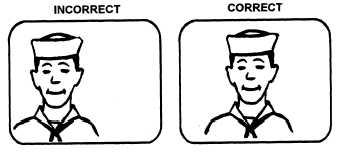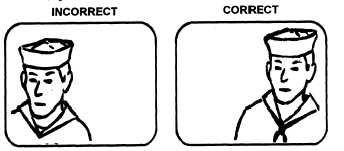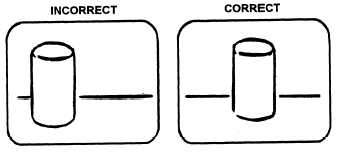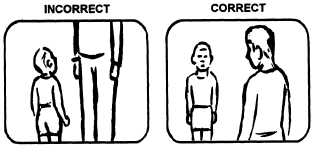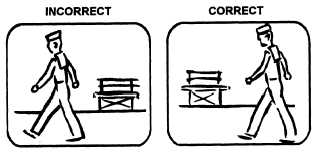Figure 14-33.—One-talent framing.
Figure 14-34.—Single-object framing.
FRAMING
In the following coverage of framing for television,
we will not dwell on photographic composition, because
it was addressed in Chapter 12. Instead, we will show
you simple line drawing examples of television framing
to show you how to present elements within the small
3:4 fixed aspect ratio of the television picture.
Use the following guidelines when you frame
subjects or objects:
l
l
l
l
One-talent framing. When only one talent is
talking directly into the camera, place the talent
in the middle of the picture to give him maximum
emphasis (fig. 14-33).
Single-object framing. When you shoot a single
object, frame it directly in the middle of the
picture (fig. 14-34).
Framing talent looking left or right. When the
talent looks left or right, give him space within
the picture to look (fig. 14-35).
Framing talent (extreme close-up). When you
want an extreme close-up of the talent, crop
space at the top of his head, not the bottom (fig.
14-36).
Figure 14-35.—Framing talent looking left or right.
Figure 14-36.—Framing talent (extreme close-up).
Figure 14-37.—Framing talents of different heights.
Figure 14-38.—Framing a moving talent.
Framing talents of different heights. When you
frame talents of different heights, do not cut the
head off one or the other (fig. 14-37).
Framing a moving talent. When you frame a
moving talent, give him room in which to move
(fig. 14-38).
14-31

